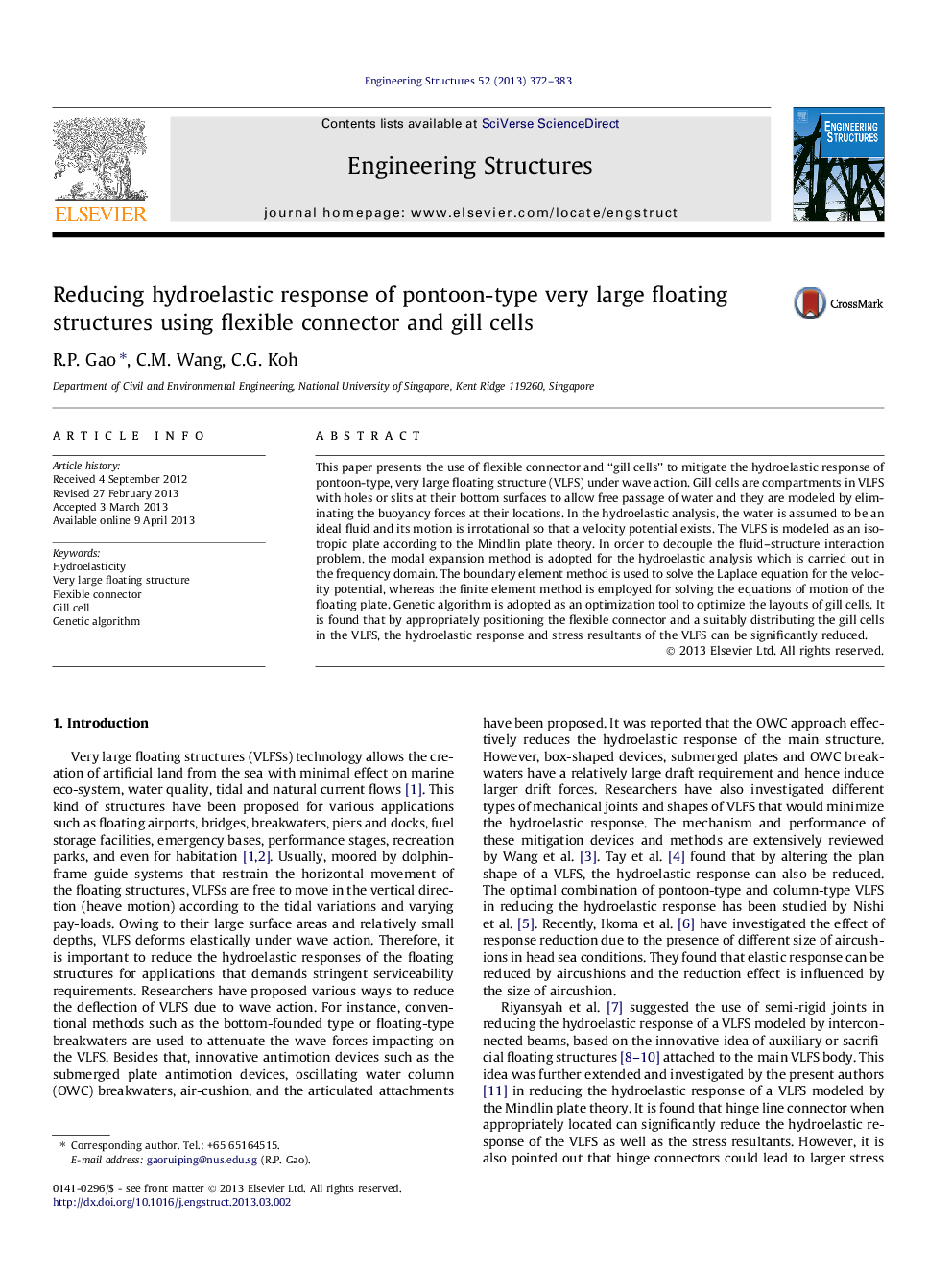| Article ID | Journal | Published Year | Pages | File Type |
|---|---|---|---|---|
| 266960 | Engineering Structures | 2013 | 12 Pages |
•A novel hybrid system comprising flexible connector and “gill cells” is proposed.•Gill cells are VLFS compartments with holes or slits to allow free passage of water.•The fluid-structure interaction is solved by hybrid boundary-finite element method.•The distribution of gill cells is optimized by constrained genetic algorithm.•The optimized hybrid system significantly reduces the hydroelastic response of VLFS.
This paper presents the use of flexible connector and “gill cells” to mitigate the hydroelastic response of pontoon-type, very large floating structure (VLFS) under wave action. Gill cells are compartments in VLFS with holes or slits at their bottom surfaces to allow free passage of water and they are modeled by eliminating the buoyancy forces at their locations. In the hydroelastic analysis, the water is assumed to be an ideal fluid and its motion is irrotational so that a velocity potential exists. The VLFS is modeled as an isotropic plate according to the Mindlin plate theory. In order to decouple the fluid–structure interaction problem, the modal expansion method is adopted for the hydroelastic analysis which is carried out in the frequency domain. The boundary element method is used to solve the Laplace equation for the velocity potential, whereas the finite element method is employed for solving the equations of motion of the floating plate. Genetic algorithm is adopted as an optimization tool to optimize the layouts of gill cells. It is found that by appropriately positioning the flexible connector and a suitably distributing the gill cells in the VLFS, the hydroelastic response and stress resultants of the VLFS can be significantly reduced.
